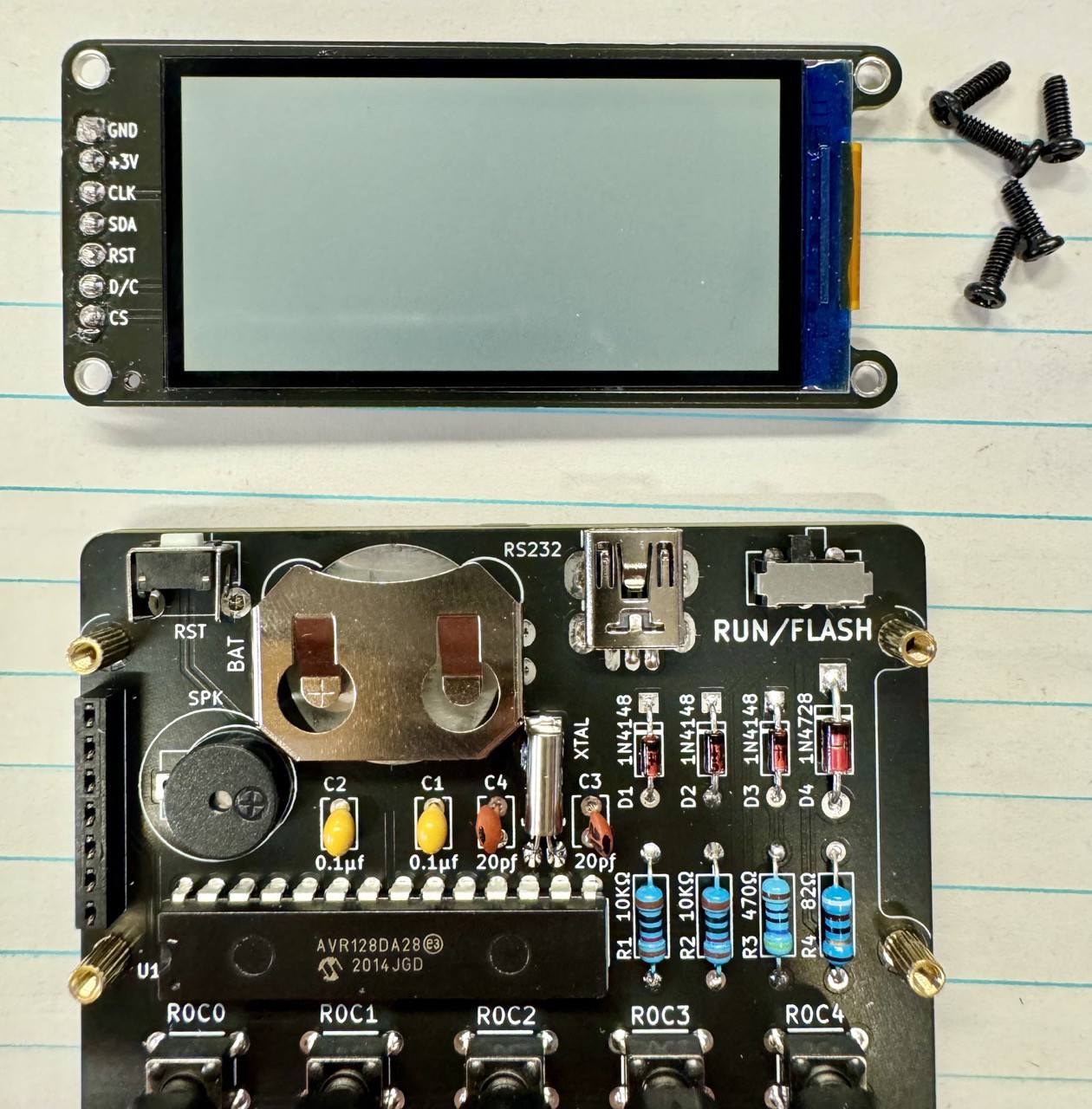
PX-41CX Design Requirements:
- Ease of Assembly: All through-hole parts for easy handling and soldering.
- Off-the-Shelf Parts: Utilizes readily available components for easy sourcing and replacement.
- Enhanced Clock/Timer: Resolution of 250ms, an improvement over the original 100ms.
- Increased Speed: Runs much faster than the original HP-41CX.
- Full RAM: 319 registers.
- Full Extended Memory: 600 registers.
- Continuous Memory Retention: Retains memory even when the calculator is turned off.
- Auto Power Off: Automatically powers off to save battery life.
- Advanced Microcontroller: Powered by a single AVR128DA 8-bit microcontroller, with selectable speeds from 8MHz to 32MHz.
- Audible Feedback: Equipped with a speaker for audible keypress feedback.
- High-Quality Display: Ultra-low power monochrome reflective LCD with a resolution of 250x122 pixels (no backlight).
- Extensive ROM Storage: Can store up to twelve 4K ROM modules.
- Real-Time Clock: Includes a real-time clock using a 32.768KHz crystal.
- Power Options: Operates on a single CR2032 3V battery or can be powered via USB cable.
- Low Power Consumption: Designed for efficiency.
- Connectivity: Supports Serial RS232 connectivity for flashing and data transfer, using a standard female USB mini B connector.
- Tactile Switches: Features tactile switches with a force of 70gf.
- Color Keycaps: Includes color keycaps for easy identification.
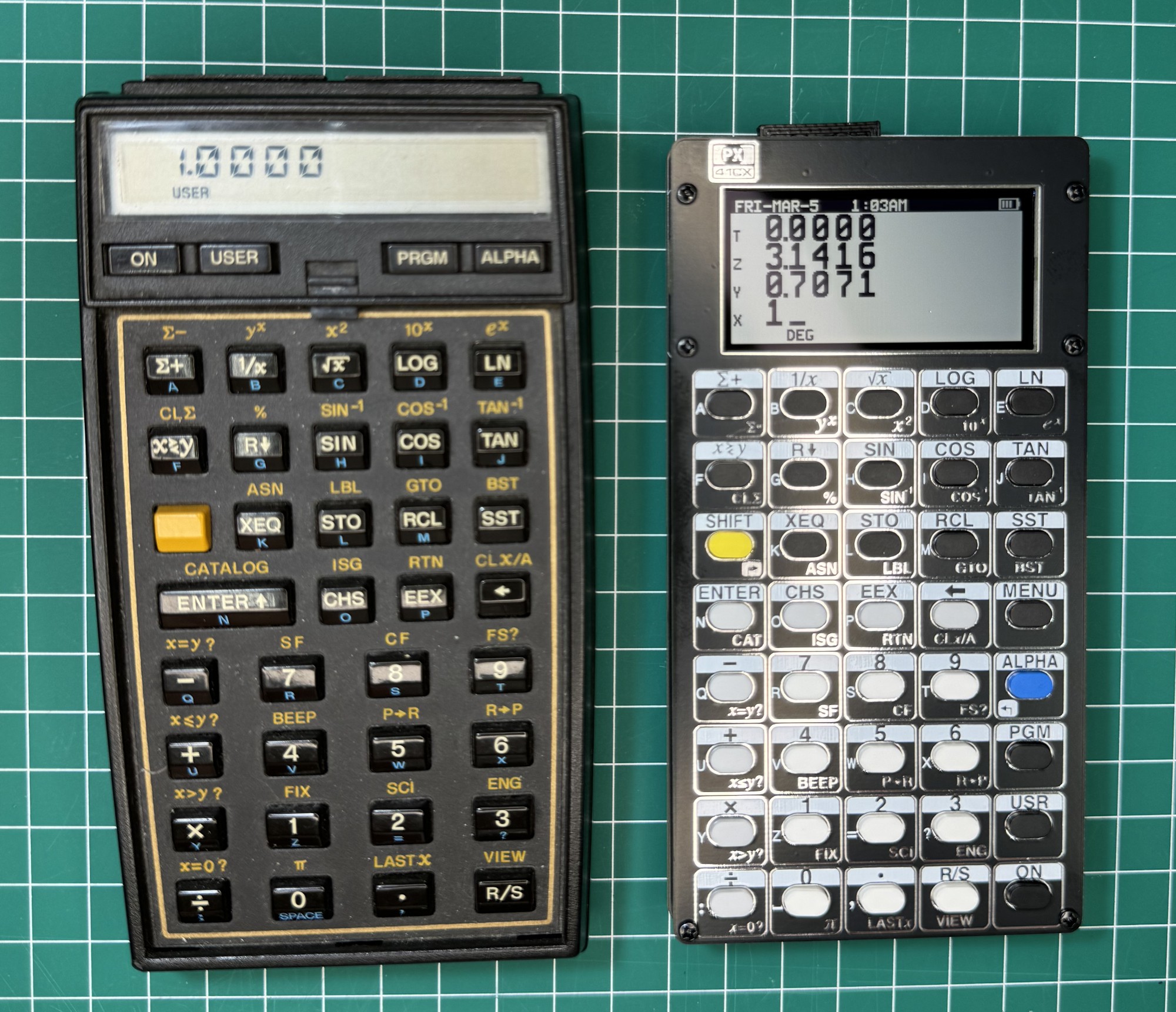
YouTube video by Calculator Clique.
 alxgarza
alxgarza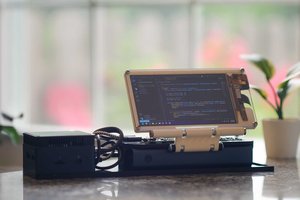
 Matt Deeds
Matt Deeds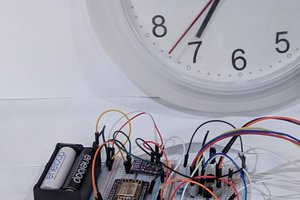
 victor-chew
victor-chew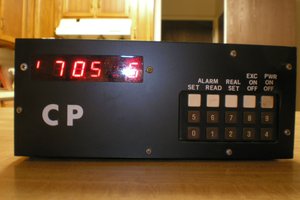
 Bharbour
Bharbour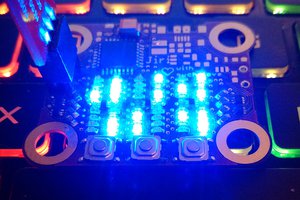
 programagor
programagor